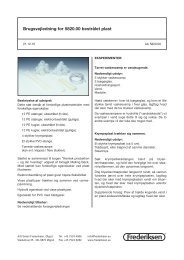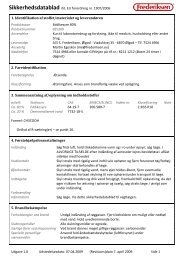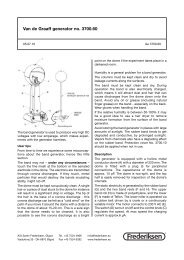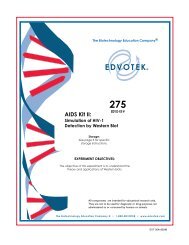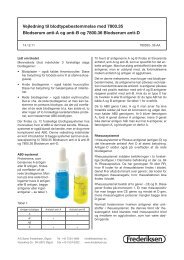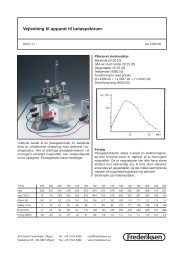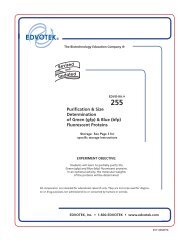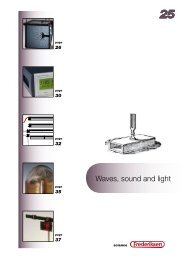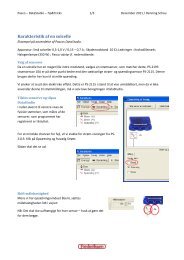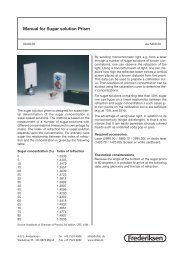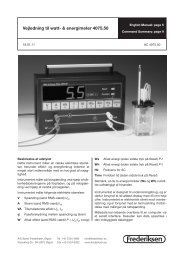198010 - Frederiksen
198010 - Frederiksen
198010 - Frederiksen
- No tags were found...
Create successful ePaper yourself
Turn your PDF publications into a flip-book with our unique Google optimized e-Paper software.
FREELY FALLING BODIESLab exerciseTheoryPurposeThe goal of the exercise is to measure falling timesfor freely falling bodies in order to determine theacceleration of gravity. The experiment will also involvebodies where air resistance is significant. The<strong>Frederiksen</strong> free fall apparatus (1980.10) is used toilluminate the agreement between theory and experiment.Equipment1980.10 Free fall apparatus including steel ballsand ping pong ball.2002.50 Electronic counter.4 test leads.0001.00 Support stand base.0008.00 Support stand.0023.00 Stand fitting.SetupThe above figure shows a body falling under the actionof the earth’s gravity. The acceleration of gravityg = 9,82 m/s 2 . When the speed of the falling body increasesthe opposing force due to air resistance increases.It is assumed here that air resistance is proportionalto the square of the speed: F = k ·v 2 .The resultant force F RES on the body is given by:F RES = m ·g - k ·v 2Where it is assumed that the positive direction isdownward.Minimal air resistanceWe assume first that k = 0, i.e. That the force of airresistance is insignificant. ThusF RES = m ·g = m ·dv/dtWhere we have used Newton’s second law:F = m ·a = m dv/dt. Thus:dv/dt = gWhich has the complete solutionv(t) = g ·t + cWhere c is an arbitrary constant. If the motion beginsat t = 0, then this constant corresponds to the initialspeed v 0 :v(t) = g ·t + v 0Note that v = g · t when the initial speed v 0 = 0.Because the speed v = ds/dt, then the general formulaisds/dt = g ·t + v 0Which has the solutions(t) = 1 /2 ·g ·t 2 + v 0 ·t + s 0Where the constant of integration s 0 in this case correspondsto the initial position.4



